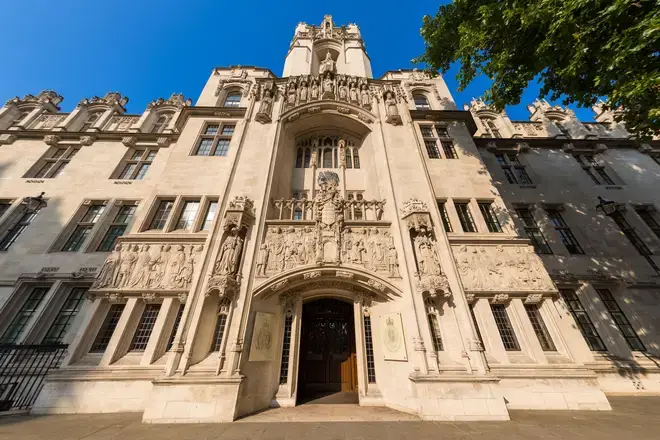When couples divorce, whatever money has been earned between them during their marriage is usually split equally, in what is known as the sharing principle.
The Supreme Court’s Wednesday ruling on the divorce settlement between Clive and Anna Standish has given more certainty to the question as to whether money or assets earned prior to the marriage, known as non-matrimonial property, should also be shared equally.
Five justices agreed that the non-matrimonial assets Mr Standish had given his wife should not be split because it was not intended for her sole use.
Mr Standish gave her £80 million to put into a trust to avoid inheritance tax in the UK, with the main beneficiaries being the couple’s two children.
Sam Longworth of Hudson Sandler and the lead partner for Mr Standish said: “The Supreme Court has also provided essential guidance as to when assets which do not have an originating connection to the marriage partnership should be considered marital.
“This guidance will give the courts a clear framework to ensure individuals cannot benefit from running false arguments as to whether they had or had not agreed to share certain assets during the currency of their relationship.”
Claire Reid, a partner at Hall Brown Family Law, said the ruling was more “goalposts being moved” than a “paradigm shift”, adding that other spouses “looking to manage their wealth to minimise their tax bills” should be “very circumspect in how they do so”.
She said: “Given the recent changes to the inheritance tax rules announced by the Government, there are likely to be many individuals undertaking the kind of estate planning that Mr and Mrs Standish were.
“Wealthier spouses will now be alive to the need to formalise the terms of any transfers of cash or other assets even more clearly to avoid falling into the same complicated situation.”
Sarah Norman-Scott and Victoria Walker, family law partners at Hodge Jones & Allen and Moore Barlow respectively, said couples should keep clear records on the source of their wealth.
Ms Walker said: “Going forward, families will need to keep tighter records to demonstrate that transfers were executed for specific purposes.
“That said, if spouses cannot meet their respective needs from the pool of available assets, the court will still draw on non-matrimonial funds to ensure fairness.
“However, for high value separations where plenty of wealth is available, Standish delivers a clear message: intent is everything.”
Yael Selig, a family law partner at Osbornes Law, predicts a “a surge” in prenuptial and postnuptial inquiries following the Supreme Court’s decision.
She said: “Whilst such agreements are not yet considered the norm, they are becoming that way and particularly for couples where there are significant assets involved, although the court’s decision will always be grounded in making sure that the financial needs of both parties are met.”
Lucy Stweart-Gould, second partner for Mr Standish at Hudson Sandler, said owning money or assets at the time of the divorce, known as having title, is not enough to claim ownership; what matters is how that property is intended to be used.
She said: “Title alone is insufficient evidence to permit a party to share in a non-marital asset.
“What is required is an intention to share and treatment of the asset as shared; on the proper analysis of the facts of this case there was neither.”
Jennifer Dickson, family law partner at Withers, agreed. She said: “The judgment makes clear that non-matrimonial property should not be subject to the sharing principle and matrimonial property should ordinarily be shared 50/50, but that non-matrimonial property can be ‘matrimonialised’ depending on the couple’s intention and treatment of that wealth during the marriage.
“Had the tax planning exercise been designed to benefit Mrs Standish, rather than their children, it may well have been a different story.”

